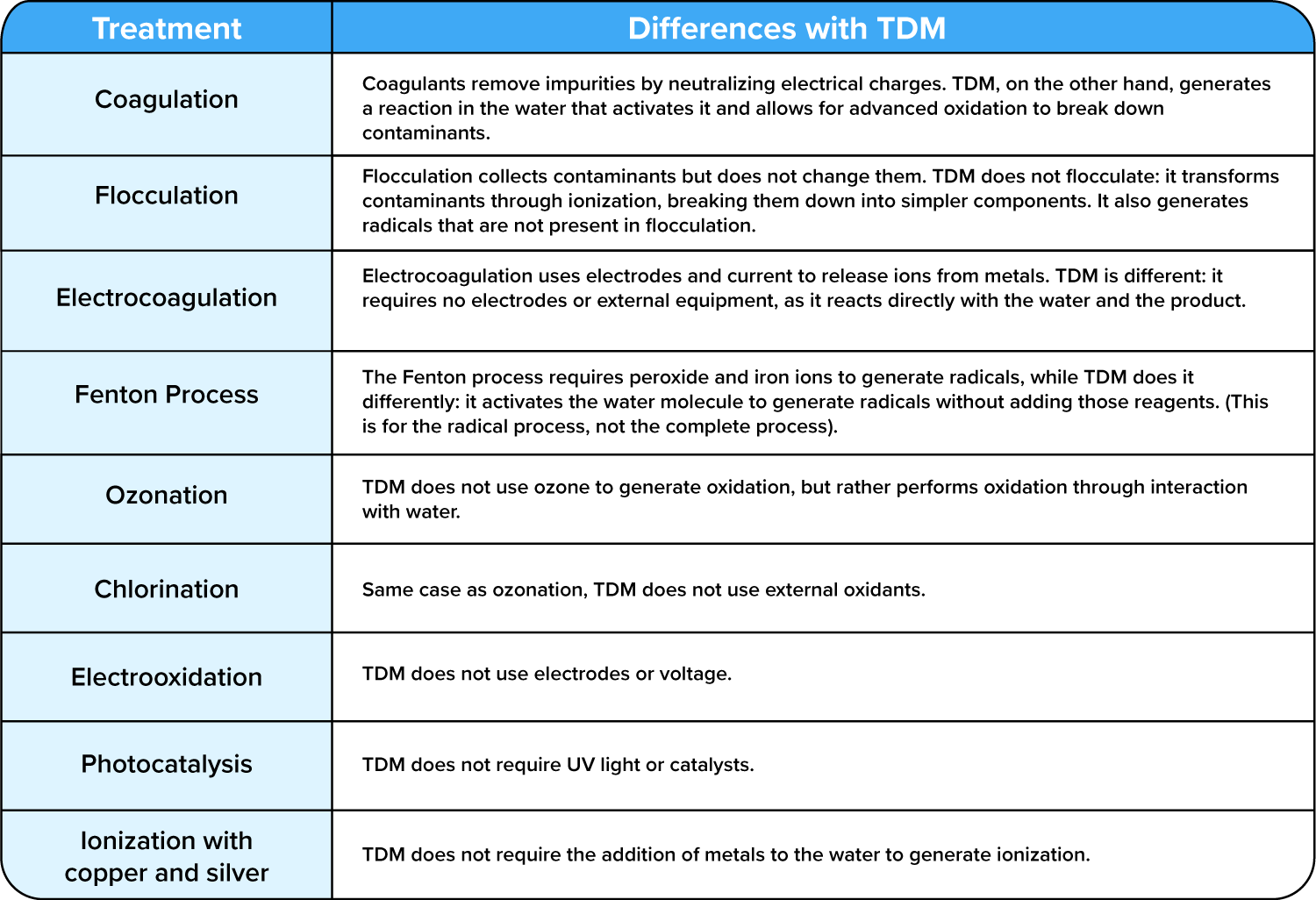
up TO 80% of the contaminants are eliminated
in the first 2 minutes of the process

Play video
What is TDM?
TDM (Molecular Disruptiom Technology) is an advanced physico-chemical process designed for the efficient removal of contaminants in wastewater, acting at the molecular level through ionization, oxidation, and destabilization reactions.
Case Studies
Explore how Molecular Disruption Technology (TDM) is transforming wastewater treatment through our case studies, technical bulletins, and videos. Learn about success stories, industry insights, and innovative applications that showcase the power of TDM.
Physicochemical Process

2. Clarification
Up to 90–95% removal of contaminants.
Efficient separation of solids generated during the chemical reaction.
Use of flocculants and coagulants for accelerated sedimentation.
Continuous degradation of contaminants throughout the process.
Production of visually clear water with low turbidity and reduced organic load.
Treated water suitable for reuse or discharge, according to general standards.

Optional
3. Filtration
Up to 99% total removal when filtration is applied.
Optional stage to optimize the final quality of treated water.
Filtration through zeolite and activated carbon beds, both pretreated with TDM.
Removal of fine particles, odors, color, and residual compounds.
Overall improvement in clarity, odor, taste, and reduction of organic traces.
Recommended for uses requiring polished water or stricter standards.

Optional
4. Tertiary Treatment
Ultrafiltration and Nanofiltration
Disinfection
Chlorination
Ozonation
UV Disinfection

Why choose us?
Because we deliver efficient, sustainable, and customized solutions that reduce costs, ensure compliance, and make the most of every drop of water.

TDM vs Other Treatments
TDM is often compared to other treatments. This table clarifies the differences to understand what makes it unique.

Flocculants: Cationic, non-ionic, and anionic flocculants (polymers). They are used for agglomerating small particles into larger particles or flocs. Available in solid form and liquid emulsions.
Coagulants: Inorganic, organic, and combined formulations coagulants. They are used for neutralizing the charges of colloidal particles.
Zeolites are used in wastewater treatment (clarification) due to their ion exchange and adsorption properties. The mesh size varies depending on the application and should be selected based on the water composition, desired efficiency, flow rate, and contaminants to be removed.
Activated carbon is used in wastewater treatment due to its excellent adsorption properties. The mesh size varies depending on the application and should be selected based on the water composition, desired efficiency, and contaminants to be removed.
Location

Dallas
Houston
Monterrey
Colombia
Chile
Italy
Saudi Arabia
India
Take your industry further with the customized solutions that Aquamont's TDM offers you for the good use of our most precious resource.
WE HELP RESTORE THE BALANCE TO THE PLANET




